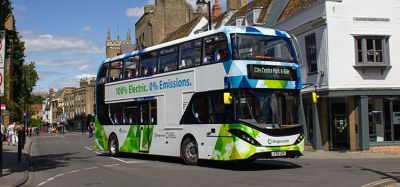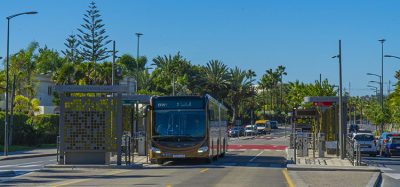City of Linz moves forward as urban air mobility (UAM) pilot city
- Like
- Digg
- Del
- Tumblr
- VKontakte
- Buffer
- Love This
- Odnoklassniki
- Meneame
- Blogger
- Amazon
- Yahoo Mail
- Gmail
- AOL
- Newsvine
- HackerNews
- Evernote
- MySpace
- Mail.ru
- Viadeo
- Line
- Comments
- Yummly
- SMS
- Viber
- Telegram
- Subscribe
- Skype
- Facebook Messenger
- Kakao
- LiveJournal
- Yammer
- Edgar
- Fintel
- Mix
- Instapaper
- Copy Link
Posted: 18 August 2020 | Sam Mehmet (Intelligent Transport)
Through a strategic partnership with EHang, the Austrian city will reportedly become Europe’s first UAM pilot city.


EHang Holdings Limited (EHang), the autonomous aerial vehicle (AAV) technology platform company, has announced the latest progress of implementing a trial urban air mobility (UAM) operation in Austria’s third largest city of Linz, under its UAM pilot city partnership with Linz AG.
At the recent global UAM Virtual Conference held by the Aviation Week Network, the Chief Marketing Officer of EHang Europe, Andreas Perotti, shared the company’s UAM use cases in varied scenarios and efforts to drive forward UAM implementation in Europe. EHang expects to soon start the trial UAM operation with EHang 216 in Linz, Austria.
EHang established strategic partnerships in 2019 with FACC and LINZ AG, local partners with experience in urban public transportation and charging infrastructure. The three parties agreed to join in developing Linz into a UAM pilot city. They will conduct passenger flights and goods transportation with autonomous air taxis in urban areas.
EHang noted that stable 5G infrastructure is available to ensure real time communication and precision for navigation during flight and landing. Next, a suitable testing route running over uninhabited areas to the vertiports will be determined within the city of Linz. While construction is planned for 2021, trial flights are planned in the near future.
In the course of the test flight, various aspects will be studied including the practicality of implementation in urban areas, acceptance by the populace and the expected positive impact on the environment, and more.
EHang Founder, Chairman and CEO, Huazhi Hu, said: “We will implement the whole value chain that is necessary for UAM operations, as well as demonstrate passenger experience journeys as well. Bookings systems, boarding processes and aftermarket service questions will play a role. In the course of the end-to-end process we will also be able to learn and improve our solutions on the go. We need to start thinking about implementation today, parallel to the ongoing regulatory processes as both will benefit from each other. Last but not least, we want to involve the people and let them touch, feel and experience UAM as far as possible today.”
Related topics
Business Models, Infrastructure & Urban Planning, Mobility Services, Vehicle & Passenger Safety
Related modes
Air taxi
Related cities
Austria
Related people
Andreas Perotti, Huazhi Hu








